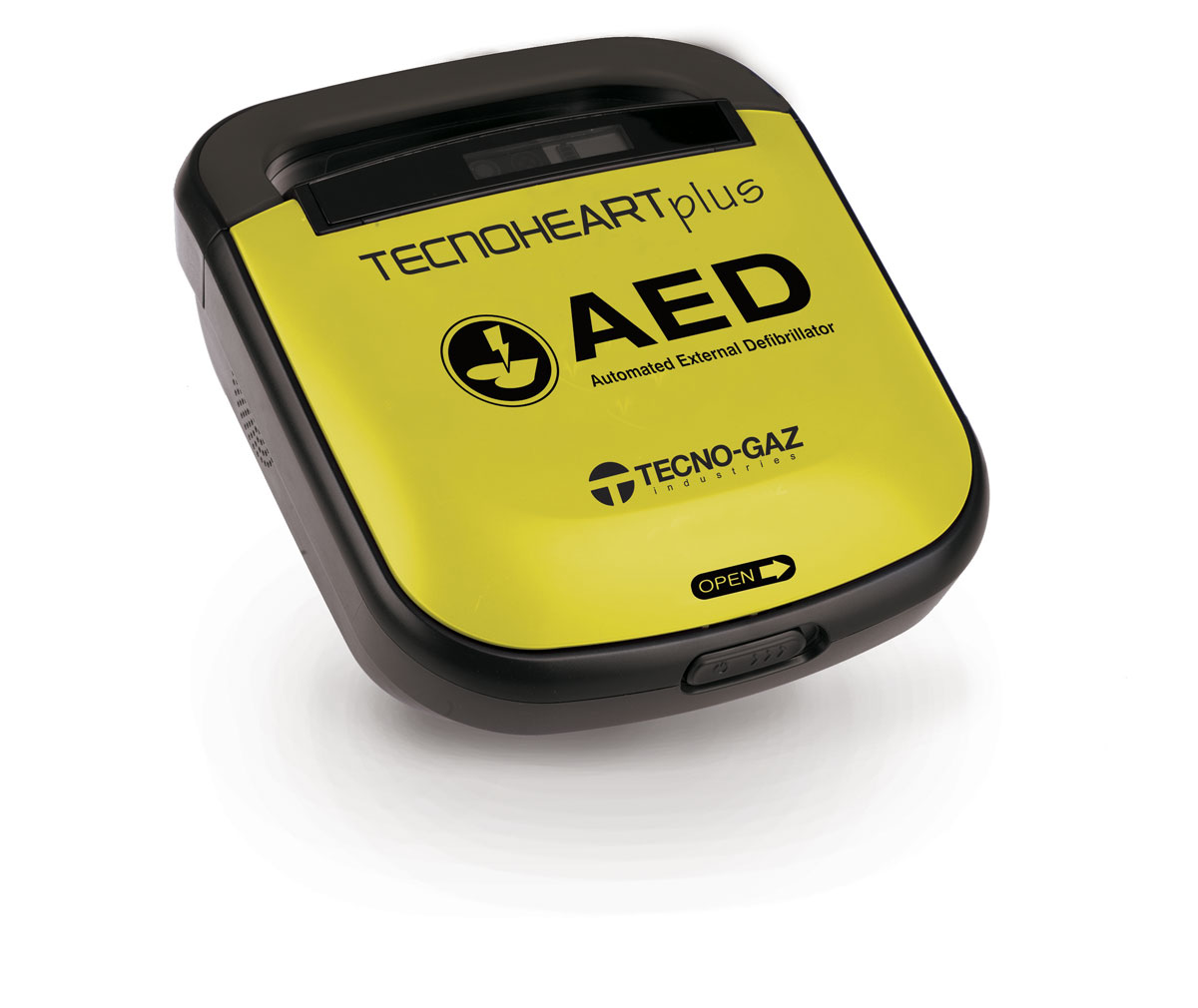
Ready for immediate use
AED automatic defibrillators are the ultimate in practical use.
These models perform all operations automatically, informing the rescuer of the functions carried out.
The electric stimuli are activated automatically, after a verbal warning.
All activities are automatic, so avoiding delays and hesitation.
Strategic location of the device
The defibrillators must be positioned for immediate visibility, as accessibility is the first step towards prompt, effective intervention.
Universal defibrillator
Adult/Child selector without the need to change plates.
.
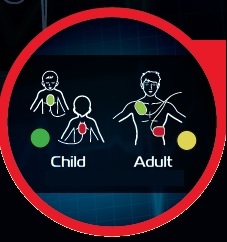
FEATURES
- Defibrillator designed to operate in compliance with the 2010 version of the guidelines laid down by the AHA/ERC regarding Cardiopulmonary Resuscitation (CPR) and Emergency Cardiovascular Care (ECC).
- Voice-guided intervention procedures: a voice guides the operator during the whole intervention.
- Cover: the cover is designed to protect the action icons, patient mode button and charge button.
- Status indicator: this shows the status of the unit, the temperature and the battery level.
- Paddle connector: this is used to connect the electrodes.
- Action icons: the LED indicator flashes red under the corresponding action icon.
- Patient mode switch: once the user has identified the patient based on type, this switch selects patient mode (adult/paediatric patient).
- Charge button: after preparation, for the electric stimulus, this button will flash.
Press the button to deliver the electric stimulus.
- Sliding button: this opens the cover. Push to the right to turn on.
- SD card slot: the SD card is required to save data and update AED firmware.
- Infrared communication port: this is used to communicate with the PC.
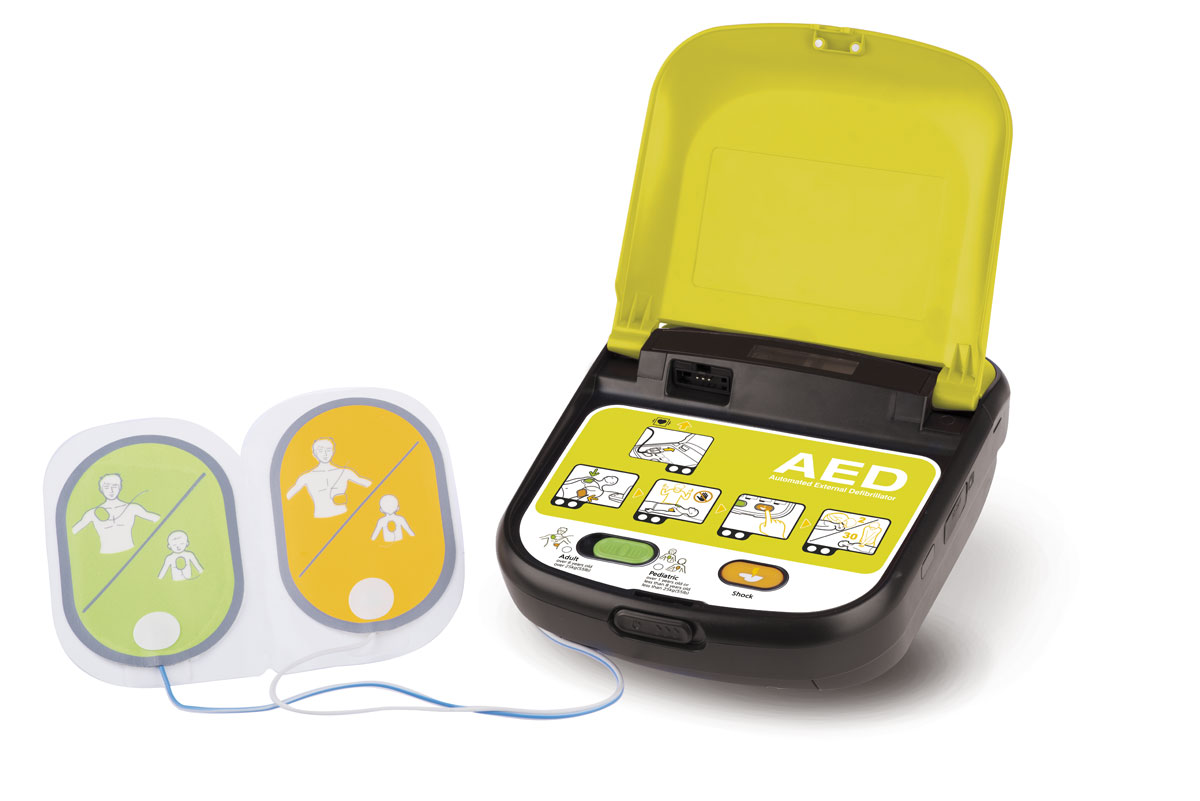
THE LIFE-SAVING DEVICE
• Voice guide: for simple, assisted use.
• SD card: storage for legal protection.
• Soft case: protection from shocks and scratches.
• Long-lasting LiMnO2 battery: 5 years, 200 discharges.
• Battery indicator: shows the battery level.
• Critical component self-test: permits efficient maintenance of equipment functions.
• Impedance calculation: verifies the integrity of AED contact with the patient.
• Display screen: instructions can be read if voice guide is inaudible.
• Two-phase discharge: electrical stimulus passing through the heart first one way and then the other.
• Heart on software: used to store AED use data systematically, and permits firmware updates.
• Pre-connected electrodes: reduce intervention times.
• Battery: 200 electric discharges.
• IRDA communication port: enables PC-defibrillator communication.
• Variable energy: Adult (>25 Kg) from 185 to 200 J - Child (<25 Kg) from 45 to 50 J
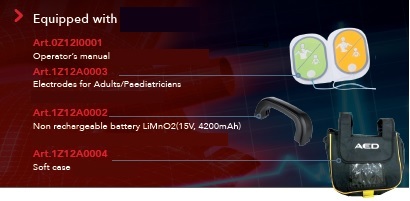
WHY USE A DEFIBRILLATOR?
First aid products are life-saving devices, therefore having these articles is a legal, ethical and professional duty.
A knowledge of emergency devices means protecting oneself, one’s professional reputation, and being ready and able to save a person’s life. Tecno-Gaz S.p.A. has developed a first aid project: a comprehensive programme helping professionals to organise their premises, making them efficient, compliant and ready to deal with any emergency.
ETHICS
Ethics are a set of fundamental, rational objectives assigning legal ethics to human behaviour with the ability of distinguishing them as good, morally acceptable compared to bad or morally inappropriate behaviour.
Being ready to provide life-saving devices is an ethical precept transcending any other assessment.
AWARENESS
Awareness means mankind’s cognitive perception and reaction to the occurrence of a certain event.
Sudden deaths from cardiovascular causes are on average more than 50% of total deaths.
OBLIGATIONS
In common language, obligation is a synonym for duty. In law, the meaning is more specific and designates the subjective legal situation of a person whose behaviour must conform to a rule imposed in the interests of other parties.
The presence of a life-saving device is mandatory for many facilities and is a “de facto” obligation in medical health areas where the type of professional practice may expose patients to cardiovascular risk.
.
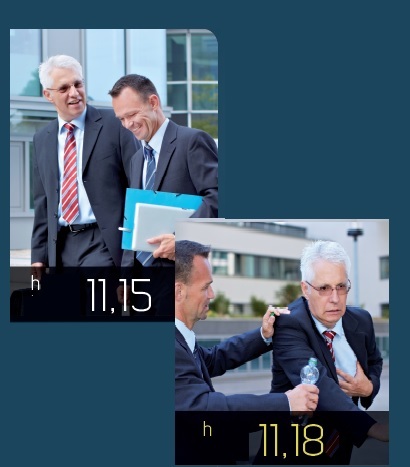
WHAT IS A HEART FAILURE?
A person is a victim of heart failure arrest when:
1- He has lost consciousness
2- He is not breathing spontaneously (or is gasping)
3- The carotid artery pulse cannot be detected.
Points 2 and 3 may not be necessarily present at the same time, but only the presence of one of these points is necessary to start the BLS (Basic Life Support) sequence.
Heart failure is often used as a synonym for sudden death, but it is better to use this term to indicate sudden loss of heart function.
Cardiopulmonary resuscitation (CPR) manoeuvres, when applied at once and correctly, can reverse heart failure, allowing the patient to survive.
Heart failure would be more correctly termed cardio-respiratory-failure (CRF), as the respiratory and cardio-circulatory functions are closely interrelated and if there is failure of one function, the other quickly follows.
A circulatory failure is quickly followed by a respiratory failure; vice-versa, failure of the respiratory activity is invariably followed by rapid deterioration of heart activity, leading to heart failure.
Circulation failure is followed by respiratory gasping within 30-45 seconds, apnea and initial pupil dilation, which becomes full within other 45 seconds.
If the main event is respiratory failure, there is progressive depletion of blood oxygen and in a few minutes there is asystole or ventricular fibrillation, leading to heart pump stop.
Thus, resuscitative measures for these two emergencies must include both ventilation and circulation.
.
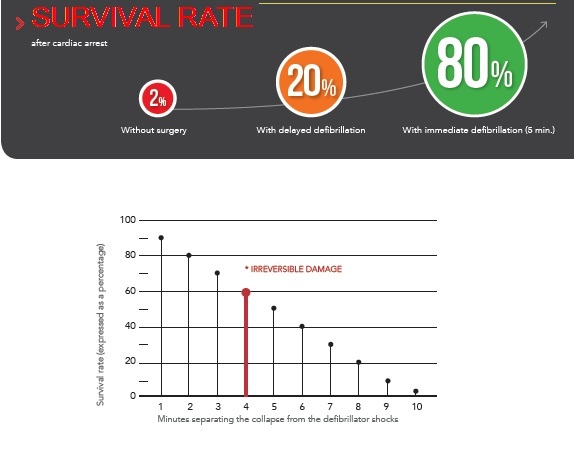
Time is a critical factor
Many studies have shown the importance of the interval between collapse from defibrillation treatment and the effects of cardiopulmonary resuscitation (CPR) performed by those present regarding to the survival of ventricular fibrillation victims.
Every minute between collapse and defibrillation lowers the chances of survival by 7 to 100% for victims of heart failure and ventricular fibrillation if cardiopulmonary resuscitation is not performed.
Ventricular fibrillation rarely returns to normal by itself.
The use of a defibrillator is essential to save a life.
Ensure that there is one available when necessary.
Reduces the time of delivery of the first stimulus
The first stimulus should be delivered within 4 minutes.
TecnoHeart Plus and its features ensure immediate operativity.
IMPORTANT NOTICE
Use of electrodes on the TECNOHEARTplus DEFIBRILLATOR by TECNO-GAZ
TECNO-GAZ S.p.A. informs all commercial partners that the use of non-original electrodes is NOT authorized on our TECNOHEARTplus defibrillator model.
Only the original electrodes supplied by Mediana Co. Ltd. guarantee the correct functionality of the TECNOHEARTplus defibrillator.
The use of non-original electrodes can cause improper operation of the AED and provide incorrect measurements. TECNO-GAZ S.p.A. assumes no responsibility for any damage caused by the use of non-original electrodes on the TECNOHEARTplus defibrillator.
We ask our business partners to respect this communication.
